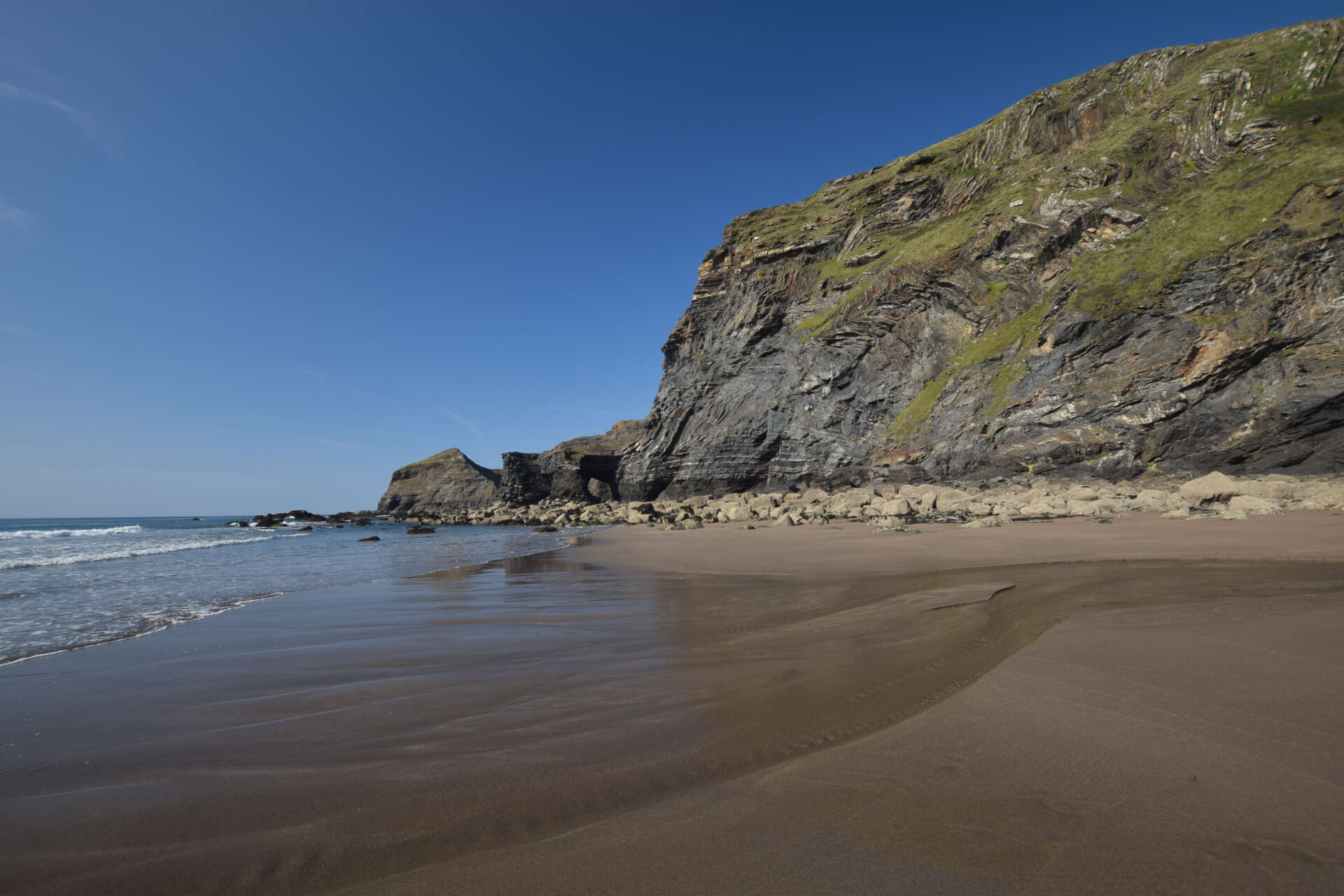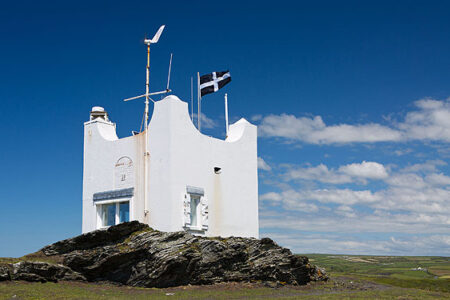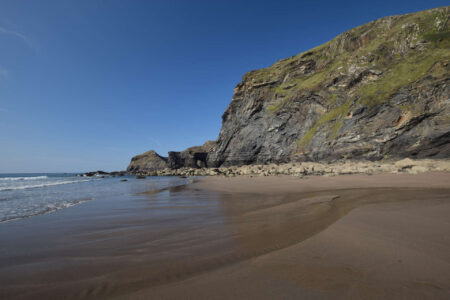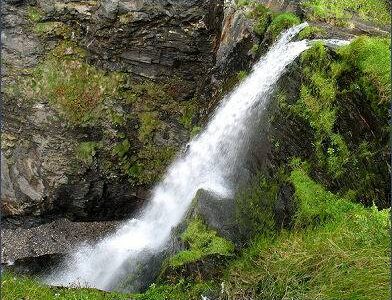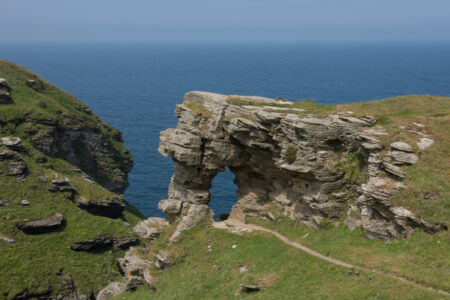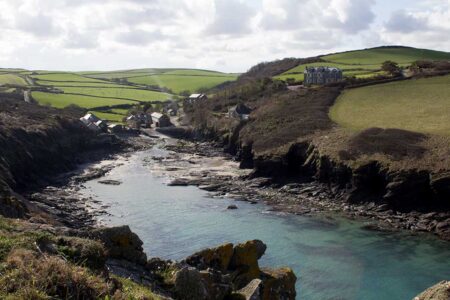Cornwall’s north coast has an entirely different personality to the calmer, more sheltered south. The cliffs here are more impressive, the landscape wave-beaten and unflinching, even the rocks seem sharper, and of course, with all that wild beauty comes some of the Duchy’s most remarkable scenery.
The closer you travel towards the Devon border the higher the cliffs seem to get. In fact, between Crackington Haven and Boscastle these towering walls of rock rise to over 200m high in places and the whole coastline just feels like a spectacular display of extraordinary geology.
At Strangles beach as well as pebbles striped like boiled sweets you can walk beneath a giant rock arch, while near St Juliot the spectacular Pentargon waterfall tumbles straight from the cliff top into a ravine, dropping 37m into the sea below. A little further along the coast the ancient concertina folds of rock at Millock Haven beach are considered some of the most impressive in Britain.
But the attraction of Cornwall’s north coast is by no means confined to its dramatic geology. This is an area of isolated coves and secluded harbours far from the gaze of the authorities and as a result stories of clandestine activities and secret smuggling operations abound, as typified by the tales told about the folly known as the Willapark Lookout. High above Boscastle’s picturesque harbour is a tiny, white painted building, now used by the National Coastwatch Institution, once the site of some rather notorious goings-on during the early 19th century.
Off the beaten track
Heading further west the tiny, out-of-the-way cove of Port Quin lies between the tourist hotspots of Port Isaac and Polzeath. This peaceful inlet is typical picture postcard Cornwall and the sheltered beach is perfect for swimming or exploring rockpools at low tide. From here the spectacular headlands of Pentire Point, where the Laurence Binyon composed the poem ‘For the Fallen’ during World War One, and The Rumps, with its impressive Iron Age fortifications, are also within easy reach.
Finally, with a wide stretch of golden sand the beach at Crantock is one of the north coast’s most popular but while admiring its beauty most visitors miss the secret hidden in a cave at one end of the small bay. With a little exploring you will discover a series of rock carvings. The face of a mysterious women and a poem have been cut into the smooth rock of the cave wall. The carvings were supposed to have commemorated a lost love but no one is really sure who made them.
Cornwall’s north coast is wild, elemental and always inspiring, it is well worth taking the time to discover what’s beyond the ‘beaten track’.
